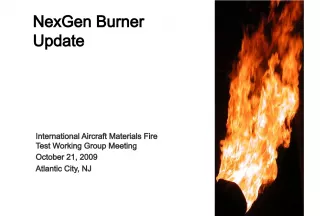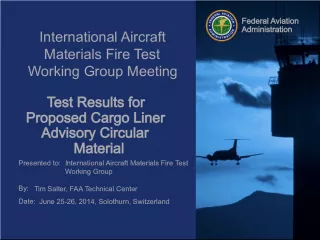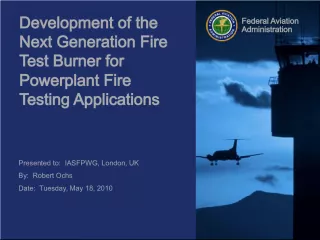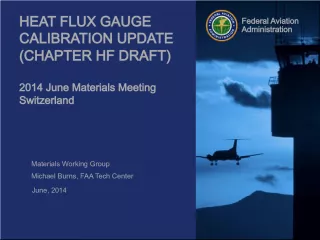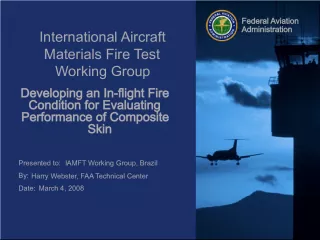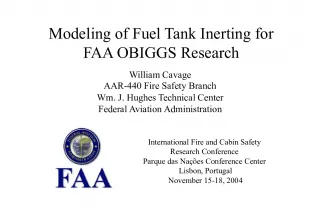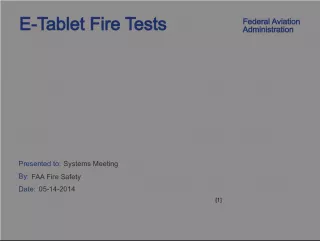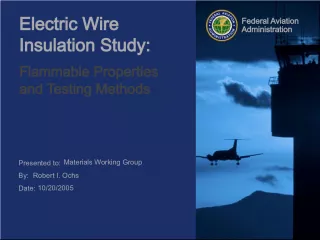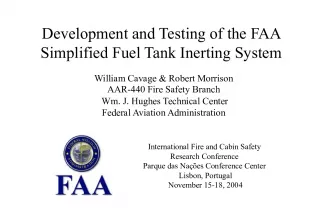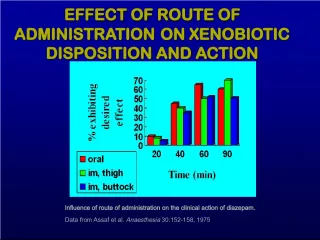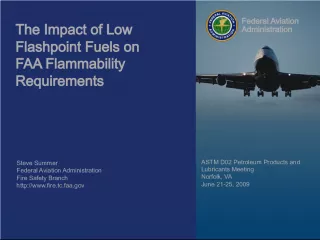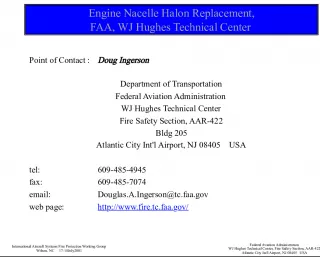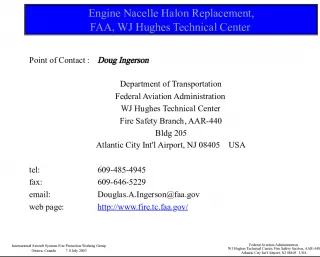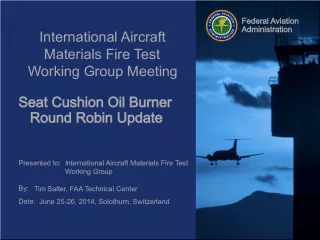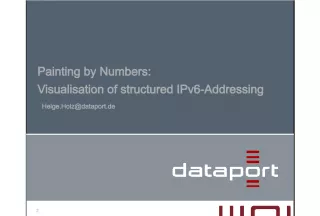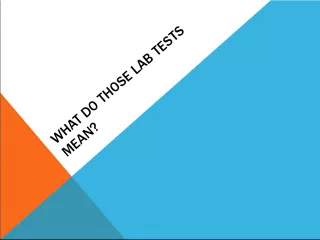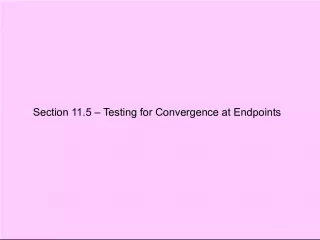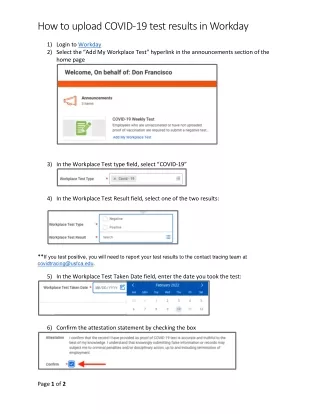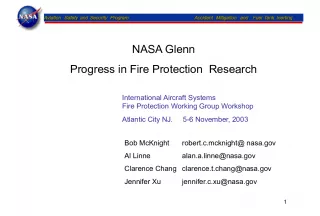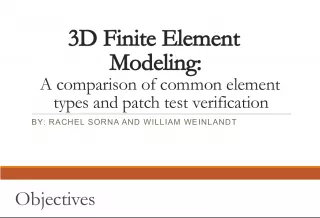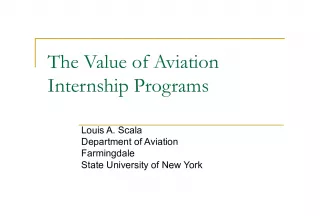Federal Aviation Administration Evacuation Slide Test Comparison Results
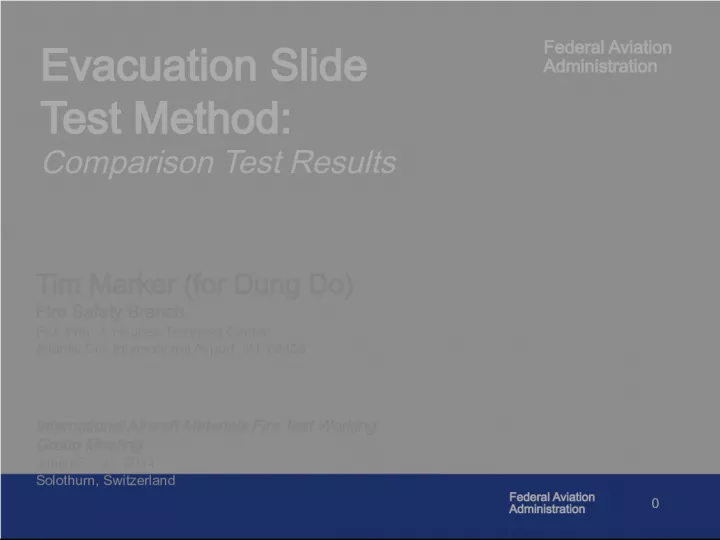

This report presents the results of the Federal Aviation Administration (FAA) Evacuation Slide Test Method Round Robin 3, which compares the performance of evacuation slide test methods.
- Uploaded on | 2 Views
-
 mayawatson
mayawatson
About Federal Aviation Administration Evacuation Slide Test Comparison Results
PowerPoint presentation about 'Federal Aviation Administration Evacuation Slide Test Comparison Results'. This presentation describes the topic on This report presents the results of the Federal Aviation Administration (FAA) Evacuation Slide Test Method Round Robin 3, which compares the performance of evacuation slide test methods.. The key topics included in this slideshow are . Download this presentation absolutely free.
Presentation Transcript
Slide1Federal AviationAdministration Evacuation Slide Test Method: Round Robin 3 Results 0 Evacuation Slide Test Method: Comparison Test Results Federal Aviation Administration Tim Marker (for Dung Do) Fire Safety Branch FAA Wm. J. Hughes Technical Center Atlantic City International Airport, NJ 08405 International Aircraft Materials Fire Test Working Group Meeting June 25 – 26, 2014 Solothurn, Switzerland
Slide2Federal AviationAdministration Evacuation Slide Test Method: Round Robin 3 Results Recent Activities • Samples were sent to 5 laboratories (only 4 laboratories participated in the comparison tests). • 1 material (Yellow/Gray) was tested, a single ply, Polyurethane coated Nylon fabric. • The Nylon fabric base is not quite square woven. The Gray color side of the slide material is coated with fine aluminum and faces the radiant heat furnace. • 3 tests were conducted according to the current test procedure • 3 tests were conducted according to the new recommended test procedure • Comparison Test results 1
Slide3Federal AviationAdministration Evacuation Slide Test Method: Round Robin 3 Results Evacuation Slide Test Method: Current Test Procedure (Current Test Procedure similar to Technical Standard Order C69c) − Calibration : 1. Start radiant heat furnace and other required instrumentation and allow ½ to ¾ hours (30 to 45 minutes) for warm up 2. Adjust transformer to achieve a radiant heat flux of 2 Btu/ft 2 -sec (2.3 W/cm 2 ) with the calorimeter positioned 1½ inches in front of the furnace 3. Move the calorimeter away from the furnace to find the precise location where the heat flux is 1.5 Btu/ft 2 -sec (1.7 W/cm 2 ) 4. Do not turn off the furnace. Use this radiant heat output for the test. − Test Procedure : 1. After the location/heat flux is achieved, move the HFG away from the furnace. 2. Mount test specimen on pressure cylinder and pressurize to appropriate level. Also align face of specimen at the distance/location established in Calibration Step 3 (do not rotate assembly in front of furnace yet). 3. Place the HFG in front of the radiant heat furnace at the distance established in calibration step 3 to verify that heat flux is 1.5 Btu/ft 2 -sec (1.7 W/cm 2 ) 4. Rotate the pressure cylinder with the test specimen in front of the radiant heat furnace. Simultaneously start the timer. 5. Record time (in seconds) to the first observed pressure loss. 6. Each specimen must maintain correct pressure for a minimum of 180 seconds to pass. 7. Repeat complete Calibration and Test Procedure for each test specimen. 2
Slide4Federal AviationAdministration Evacuation Slide Test Method: Round Robin 3 Results Evacuation Slide Test Method: Recommended “New” Test Procedure • Calibration : 1. Start radiant heat furnace and other required instrumentation and allow ½ to ¾ hours (30 to 45 minutes) for warm up 2. Position calorimeter 2 inches in front of furnace and adjust transformer voltage to produce heat flux of 1.5 Btu/ft 2 -sec(1.7 W/cm 2 ) 3. Do not turn off the furnace. Use this radiant heat output for the test • Test Procedure : 1. After the heat flux is achieved in step 2 specified under calibration, rotate the HFG assembly away from the furnace. 2. Pressurize the cylinder with the test specimen and check the distance of the center of expanded surface of specimen to verify it is 2 inches in front of the furnace 3. Position the HFG in front of the radiant heat furnace to verify that heat flux is 1.5 Btu/ft 2 sec (1.7 W/cm 2 ). 4. Rotate the pressure cylinder with the test specimen in front of the radiant heat furnace. Simultaneously start the timer. 5. Record time (in second) to first observed pressure loss. 6. Time requirement for each test specimen is to maintain the correct pressure for a minimum of 180 seconds. 7. Repeat calibration and test procedure for the each test specimen. 3
Slide5Federal AviationAdministration Evacuation Slide Test Method: Round Robin 3 Results Test Results Using Current Method 4
Slide6Federal AviationAdministration Evacuation Slide Test Method: Round Robin 3 Results Test Results Using The New “Recommended” Method 5
Slide7Federal AviationAdministration Evacuation Slide Test Method: Round Robin 3 Results Comparison of Current and Recommended Procedures 6
Slide8Federal AviationAdministration Evacuation Slide Test Method: Round Robin 3 Results Current Test Method Results 7
Slide9Federal AviationAdministration Evacuation Slide Test Method: Round Robin 3 Results “New” Test Method Results 8
Slide10Federal AviationAdministration Evacuation Slide Test Method: Round Robin 3 Results Conclusion • Yellow/Gray Material with Aluminum Coating passed both the Current Test and Recommended Test • Current Test Method results were consistent with the “New” Recommended Test Method results • “New” Recommended test procedure advantages: − Simpler test setup − Reduces time required for testing − Calorimeter and Test Specimen locations are specified • Lab D did not send the current test procedure test results. 9
Slide11Federal AviationAdministration Evacuation Slide Test Method: Round Robin 3 Results Future Work • Conduct validation testing comparing Calorimeter and Power Controller outputs • Power / Heat Flux is measured and recorded using the computerized data acquisition system • After validation testing of the power controller unit, FAA will conduct several tests on slide material 10
